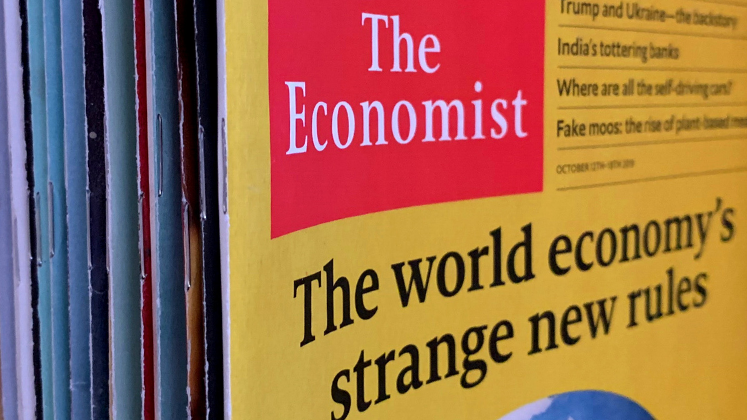Since its origins as a newspaper supplement, the Times Higher Education (THE) has become so much more than a higher education news company. As its business model and commercial raison d’être changed, so has its rankings-related journalism. In this post, Morten Hansen and Astrid Van den Bossche explain how recent research on THE rankings output can help us think about and consider the business rationale for THE’s acquisition of Inside Higher Ed.
On 10 January 2022, Scott Jashick and Doug Lederman, editors of Inside Higher Ed, announced the publication’s acquisition by Times Higher Education (THE) as such:
“As journalists, we often say that we want to report the news, not be the news. We are making an exception today to announce that Inside Higher Ed has been acquired by Times Higher Education (THE), the world’s leading provider of higher education news, data and insights.”
These are powerful organisations in the higher education sector, and the acquisition will strengthen THE’s influence in the US. Inside Higher Ed generates a reported 7.5 million monthly page views by providing free higher education news, as well as publishing research reports, organising events, and running an academic job search platform catering to US-based universities and colleges. THE similarly has roots in the news industry, but is now a data company and powerbroker whose executives rub shoulders with university vice-chancellors and government ministers. It offers higher education news on a subscription basis, publishes the World University Rankings, hosts industry conferences, and provides data, analytics, and consultancy services to the sector.
the change in ownership means that the news platform is becoming part of an ecosystem of actors and activities that naturalise rankings, and by extension support THE’s burgeoning business model in this area
There are a number of reasons why the acquisition is worthy of attention, some of which are encapsulated in the subtle distinction that Jashick and Lederman make by italicizing Inside Higher Ed, but not THE; in doing so, they emphasise that Inside Higher Ed is a publication first and foremost, but the buyer, despite publishing an eponymous magazine, is a firm. The distinction points to a tension between ideals of editorial freedom and the realities of revenue generation: the change in ownership means that the news platform is becoming part of an ecosystem of actors and activities that naturalise rankings, and by extension support THE’s burgeoning business model in this area. We are not arguing that Inside Higher Ed will change their current revenue generating practices, but their underlying purpose and commercial potential, as viewed from the offices of THE’s private equity owner Inflexion, will likely be altered.
Shifting focus?
Whilst it is impossible to predict how the acquisition will impact Inside Higher Ed coverage, if THE’s own history is any guide, it just may. In a recent study of THE’s rankings-related coverage from 1994 to 2020, we found that the firm’s growing commercial dependence on university rankings was associated with an overall increase in rankings-related journalism, coupled with topical shifts. Where league tables were primarily discussed in the context of a bustling British higher education sector, the launch of the World University Rankings and subsequent spinoffs gradually introduced more writing about their methodology and crafted a global landscape of educational institutions vying for top positions. Our analysis also evidenced the rhetorical strategies used to legitimise and spectacularise the rankings. All this contributes to their normalisation in the sector, and highlights the role of journalism in setting these norms.
If Inside Higher Ed were to follow a similar path in the coming years, we might expect more news articles suggesting that the World University Rankings are methodologically sound and meaningful, that high-ranking universities are “the best,” and that the leaders of those institutions are worthy of praise. Being editorially independent from THE will also avoid the conflicting position THE finds itself in as: the neutral reporter of rankings ‘news,’ and the producer and owner of the very rankings generating said news.
Commercial Interests
Companies typically acquire other companies to eliminate competitive threats, cut costs through efficiencies, or leverage complementary capabilities. All three reasons could be at play in this most recent acquisition, but our guess is that complementarity is the main driving force behind Inflexion’s long-term business strategy. Anand Sanwal, CEO at the market intelligence company CB Insights, recently observed that companies like JP Morgan Chase and Stripe are buying media assets, and muses that these acquisitions could have something to do with customer lifetime value and customer acquisition cost. Companies with high customer lifetime value—such as some financial firms and consultancies—can earn high revenues from its clients over long periods of time. However, their customer acquisition costs also tend to be high because of fierce competition, making the audiences commanded by media assets particularly attractive.
At a time when traditional business models in the publishing industry are under threat, THE is providing one route to sustaining the sector. If we do not like this route, we must think of alternative ways of funding high-quality reporting.
As THE is strengthening its position as a gatekeeper of reputational power and source of analytic insight to the sector, it is also trying to climb up the customer lifetime value ladder. Instead of mostly competing with traditional higher education news providers like The Chronicle of Higher Education, they must now contend with ranking and recruitment firms like Quacquarelli Symonds and Niche, as well as consultancy firms like EY-Parthenon and KPMG. In this view, the value of Inside Higher Ed might be less in the form of a profitable news producer in its own right, and more as a trusted content producer that can help THE develop high lifetime value relations in the North American market.
It is right to maintain a healthy dose of scepticism about the shifting commercial rationales that are fuelling higher education journalism. That said, THE and Inside Higher Ed’s journalists do continue to produce excellent and important coverage of the sector, much of which is unrelated to the vertiginous world of university rankings. At a time when traditional business models in the publishing industry are under threat, THE is providing one route to sustaining the sector. If we do not like this route, we must think of alternative ways of funding high-quality reporting.
This post draws on the authors article (in press): From newspaper supplement to data company: Tracking rhetorical change in the Times Higher Education’s rankings coverage, available via King’s Research Portal.
The content generated on this blog is for information purposes only. This Article gives the views and opinions of the authors and does not reflect the views and opinions of the Impact of Social Science blog (the blog), nor of the London School of Economics and Political Science. Please review our comments policy if you have any concerns on posting a comment below.
Image Credit: Alain Pham via Unsplash.








